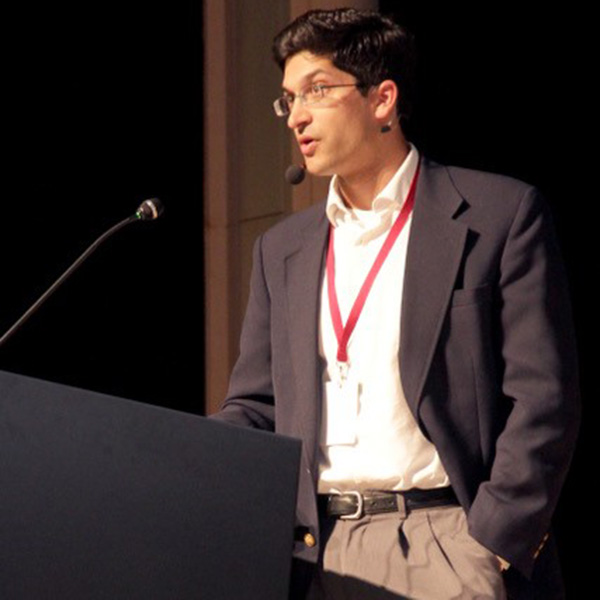Synthetic chemist Ryan Shenvi ties together traditional remedies and Western medicine to find breakthrough solutions to complex problems of the central nervous system. His lab is continuously innovating chemical pathways to generate valuable molecules in more efficient, more environmentally friendly and more effective ways.

How did you get your start in chemistry?
The funny thing is, I never cared for the general chemistry that I learned in high school or even early college, which is no reflection on my teachers, I just found it very dry. It wasn’t until I took my second semester of organic chemistry that the material really clicked. At the time, I was taking a course in discrete math and the logic of proofs, which taught me a unique way of thinking and problem-solving when combined with the visual framework for understanding chemistry. Now that I’ve been in the field a long time, I’ve had to learn backwards all the general concepts of chemistry, which now come alive in the context of what we’re studying. So, I guess you could say I’ve learned chemistry more from the top-down as opposed to the bottom-up.
You mentioned organic chemistry. So, what is the difference between organic and inorganic chemistry?
To put it simply, organic chemistry mainly involves the chemical element carbon. Molecules associated with living organisms are primarily made from carbon and hydrogen. You also get additional elements like oxygen and nitrogen, phosphorous and sulfur. For the most part, it’s just a little handful of elements, whereas with inorganic chemistry, you broaden out to the rest of the periodic table. In our lab, we use these other elements in service of synthesizing organic molecules. That includes abundant elements such as calcium or sodium, iron or manganese, all the way to precious metals like gold or platinum.
And your lab is focused on synthesizing useful organic molecules?
Absolutely. Well, we hope they’re useful. One of the things we do is take unwanted chemical byproducts from different industries and use them to create valuable new molecules. This is a great environmental service that chemistry can provide: upcycling materials that otherwise could have gone into the landfill or incinerator. And there are examples of this everywhere; artificial vanilla extract is a good one, which we’ve probably all eaten. Real vanilla is extracted from the seed pod of an orchid, but it’s expensive and a relatively limited resource. Artificial vanilla, however, is much cheaper and is derived from the waste stream of either the paper mill or petroleum industry. During the purification process, some aromatic byproducts can be upcycled into the identical component of vanilla that gives the characteristic smell and taste. Similarly, people may be familiar with the idea that nature provides a lot of the medicines we use today, but so many of these molecules are just not practical to obtain from the source organisms. My lab tries to solve that problem, upcycling chemical feedstocks to natural products that often come from ethnomedicine.
Ethnomedicine? What is that exactly and what are the applications?
Ethnomedicine investigates how indigenous groups developed and used traditional medicines, based on bioactive materials in surrounding plants and animals, to treat maladies common to all humans. It’s this fascinating intersection of anthropology, botany and chemistry. My lab has been really interested in a collection of molecules originally discovered in the bark of rainforest trees in Papua New Guinea and Northern Australia, where the native people have long understood it to have palliative and hallucinogenic effects. We’re trying to leverage our skills in chemistry to figure out which receptors in the human brain are being targeted by these molecules, and how they may be useful for disorders of the central nervous system. This would include mental health disorders, such as PTSD and depression, which are growing areas of application for hallucinogenic substances, but also basic functions of learning and memory.
How much of modern medicine might be rooted in this ancient wisdom?
Most of Western prescription medicine comes from the apothecary, which trafficked in mainly herbal remedies. Although apothecary sounds like such an antiquated word, it was still commonly used 100 years ago and vestiges of its history still exist, since the German word for pharmacy is “apotheke,” derived from Greek. And it was the Greeks who discovered that bark from willow trees could be used to treat painful medical problems. Later extracts of willow yielded salicylic acid, which became the basis of aspirin. There are innumerable examples of this throughout history, where preparations that were once considered folklore turned out to be validated by science. And in fact, it was during the 19th and 20th centuries that the apothecary became the modern pharmaceutical industry that we recognize today.
Stay tuned for the summer 2022 season of the Science Changing Life podcast, which will explore more of Shenvi’s research.